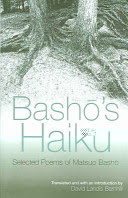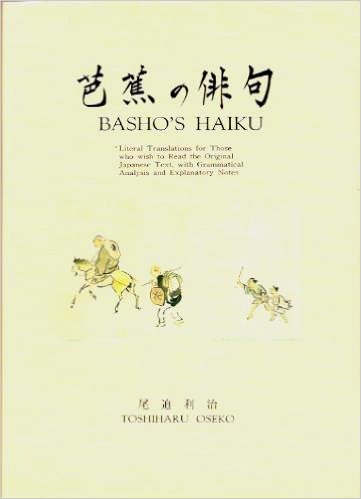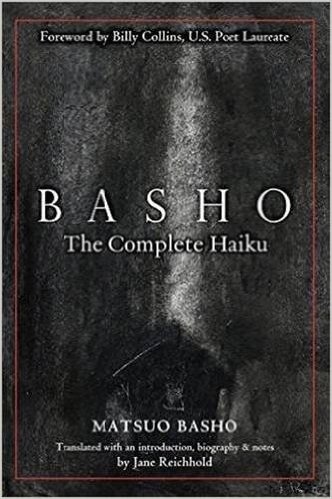Bashō: Barnhill's Basho's Haiku: Selected Poems of Matsuo Basho.
Matsuo Bashō
 Writings: various translations.
Writings: various translations.
 Haiku.
Haiku.
 Haibun.
Haibun.
 Renga.
Renga.
 Time Line.
Time Line.
A complete library would include, in addition to this Barnhill book:
Matsuo Bashō
 Oseko's annotated translations.
Oseko's annotated translations.
 Comparison of Oseko and Reichhold translations.
Comparison of Oseko and Reichhold translations.
 Examples of Oseko and Reichhold and Barnhill translations.
Examples of Oseko and Reichhold and Barnhill translations.
 Comparison of other translations from Bashō's haibun.
Comparison of other translations from Bashō's haibun.
Features of Barnhill's
Basho's Haiku: Selected Poems of Matsuo Basho
Factoids for Barnhill's
Basho's Haiku: Selected Poems of Matsuo Basho:
Note that Barnhill sometimes uses hokku, the historic term
that would have been used by Basho himself, for a short poem that was the
initial link or stanza of a linked set that of formed a renku.
And sometimes he uses haiku (the modern term) to refer to the short poems that Basho wrote.
This seems apt, as (a) we are talking about translations and
(b) many of the poems that have come down to us were not necessarily opening links
(i.e., hokku). The term hokku began to be expanded. But the modern
and more general term is haiku, which is use in these comments.
Features of the translated haiku:
- 724 of the Basho's roughly 1000 known haiku are translated and annotated here.
- Organized by year of composition and by season within that year.
- Barnhill mostly adheres in the translations to the original Japanese word order
so that the sequences of images arrives as Basho intended.
Barnhill does change Japanese post-positions into prepositions
and makes other sensible changes.
- With each translation, Barnhill includes the romaji (romanized
text) and a translation of any accompanying headnote provided by Basho.
- The section of notes is of comparable size to the section of haiku.
Features of the supporting material.
- Organized by year of composition and by season within that year.
- Disastrous flaw which appears twice on page 5, where Barnhill claims:
"It is common knowledge that the traditional form of a Japanese haiku is
three lines with seven, five, and seven syllables."
The traditional Japanese haiku uses a sound pattern of 5-7-5 not 7-5-7.
Also the Japanese traditionally wrote their haiku as a single vertical line (sometimes
on multiple lines for haiga).
Factoids for Barnhill's
Basho's Haiku: Selected Poems of Matsuo Basho:
- Translator, editor, and annotator: David Landis Barnhill.
- ISBN-10: 0791461661; ISBN-13: 978-0791461662.
- Published August 2004; 346 pages.
- Contents
- Introduction
- Basho's Haiku
- Contents
- Preface
- Selected Chronology of the Life of Matsuo Basho
- Introduction: The Haiku Poetry Of Matsuo Basho
- Translation of the Hokku (in 136 pages)
- Notes (in 114 pages)
- Major Nature Images in Basho's Hokku (10 pages)
- Glossary (4 pages)
- Bibliography (4 pages)
- Index to Basho's Hokku in Translation (24 pages)
- Index to Basho's Hokku in Japanese (18 pages)
- Index of Names [of people referenced in the work] (3 pages)
-
Links and Books.
-
[Thanks for visiting.]

 Highlights of Poetry.
Highlights of Poetry.
 Index of poetry.
Index of poetry.
 How to Write Poetry.
How to Write Poetry.
 Books read.
Books read.



